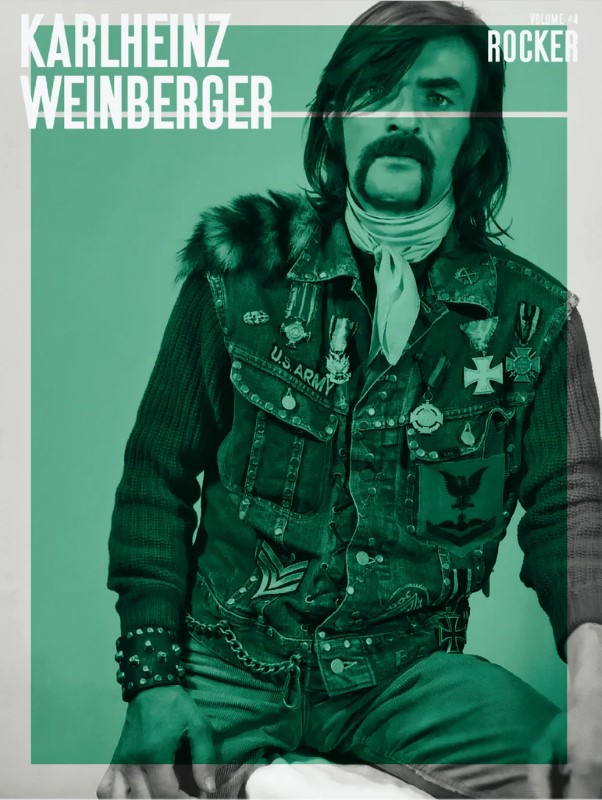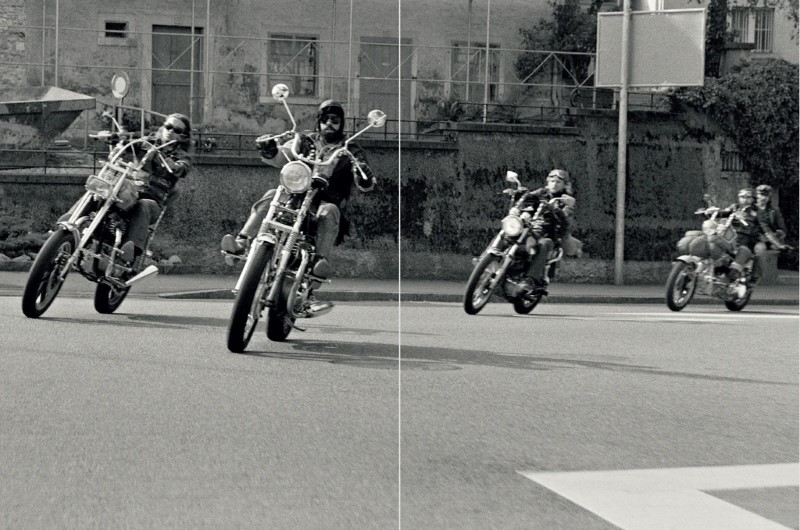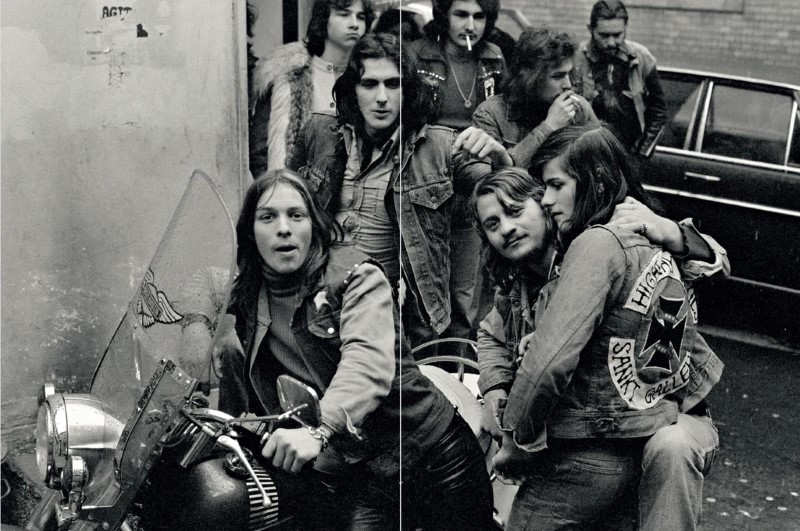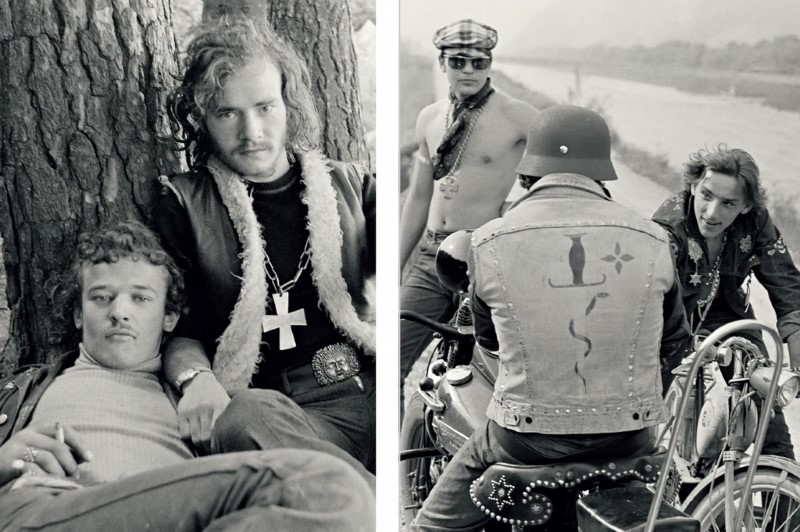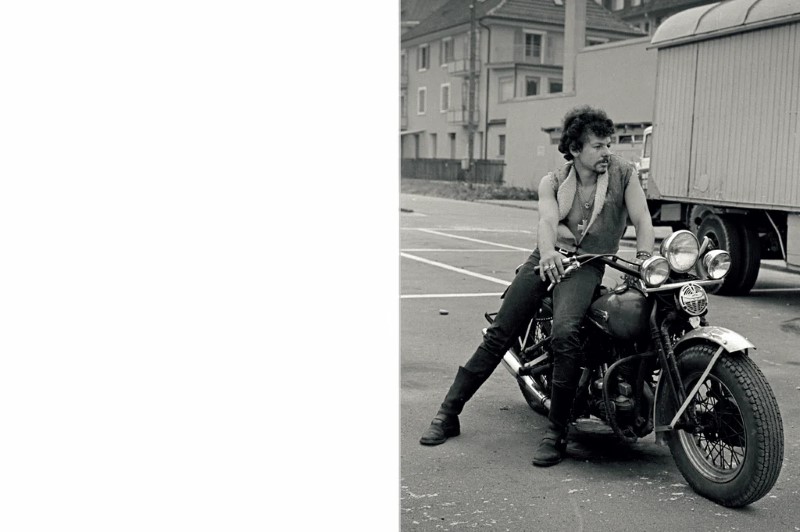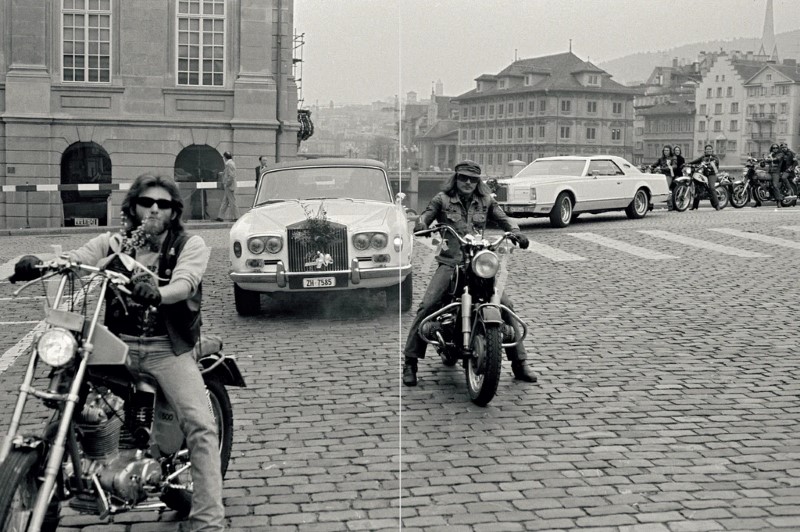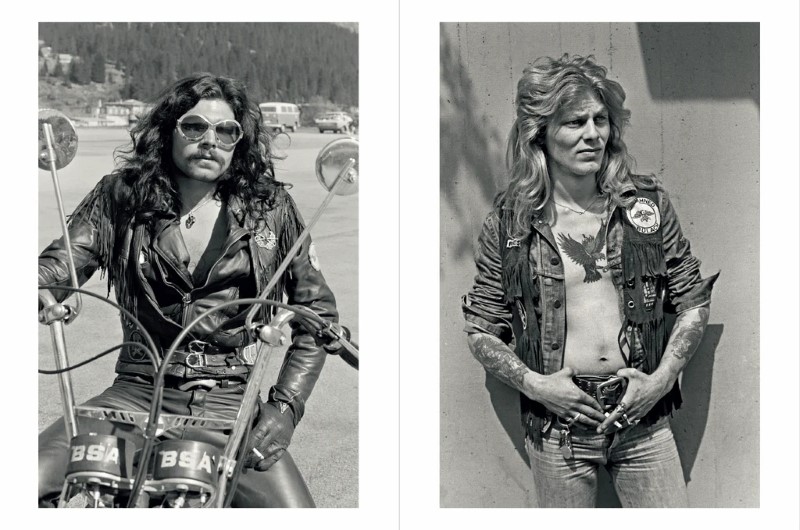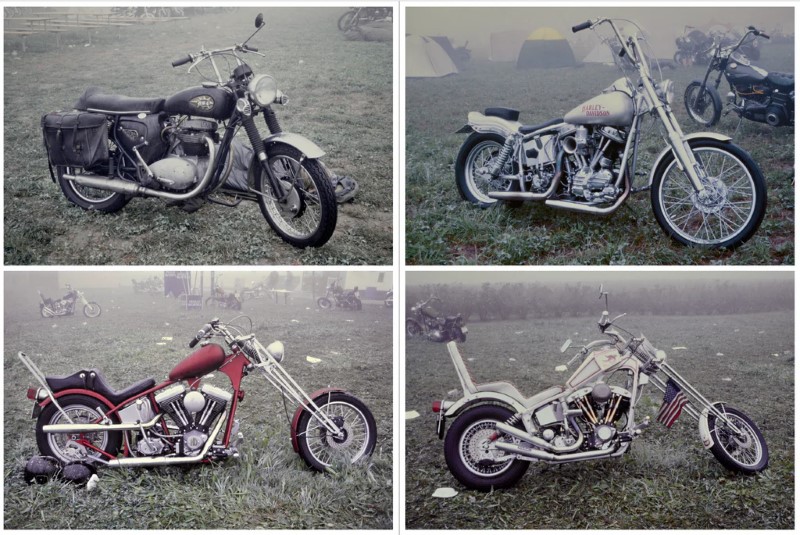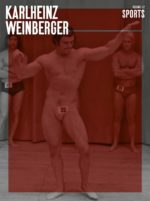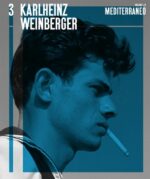1ère édition tirée à 1 000 exemplaires.
1st edition limited to 1000 copies.
Karlheinz Weinberger a vu quelque chose dans les adolescents et les rockers qui était caché à tout le monde à l’époque et il voulait le capturer. La société, qui n’a vu que les jeunes délinquants aux cheveux longs et aux tatouages, pas les personne réelles, qui ont principalement essayé de reproduire les poses des modèles des premiers films de motards.
Karlheinz Weinberger les traitait toujours correctement, m’ont dit d’anciens membres des Lone Stars, le « gang de voyous » dont les Hells Angels sortirent plus tard. Il était toujours là avec son appareil photo, sur la touche et pourtant au milieu des choses. Il a été particulièrement apprécié car il a généreusement distribué les tirages de ses photos. Les photographies de Weinberger apparaissent donc encore et encore dans les albums photos de ses protagonistes. Ces albums étaient pour eux ce que le fil Instagram est pour les adolescents d’aujourd’hui. Rien n’était aussi important que la photo. L’image d’un membre « sauvage » d’un gang.
Les photographies de Karlheinz Weinberger se distinguent lorsque vous feuilletez ces albums. Peu importe la fréquence et l’enthousiasme avec lesquels les jeunes se photographiaient, la photo qu’ils prenaient d’eux-mêmes était floue et manquait de contours. Seul l’étranger Weinberger a réussi à montrer qu’ils étaient plus que des « rebelles sans cause ». Il les a fait poser pour son appareil photo et en même temps a exagéré la pose avec des moyens photographiques. Il a vu la beauté derrière l’apparence martiale. La fierté et la vulnérabilité que les premiers rockeurs ont essayé de cacher derrière leurs uniformes rapiécés et leurs énormes boucles de ceinture. Et bien sûr l’érotisme qui résonne comme un courant électrique à travers tout son travail.
À la fin des années soixante, lorsque le « Halbstarke » (voir KHW Vol. 1) est devenu les premiers gangs de motards, Weinberger est depuis longtemps devenu le « photographe de cour » de la scène. Il était là quand les Lone Stars se sont transformés en Hells Angels. Il a pris des photos lors des premiers grands rassemblements de rockeurs, qui avaient encore le charme des légendaires rassemblements de la Pentecôte des motards sur l’île St. Peter au lac de Bienne. On lui a demandé d’assister à des mariages et à des funérailles, et il a été invité à des ouvertures de club et à des voyages. Et Weinberger a pris des photographies, comme toujours en marge, mais comme une partie importante de ce « mouvement », qui au fil du temps s’éloignait de plus en plus de ses débuts anarchiques ; avec un texte d’Adrian Winkler, photos en n.b. et en couleurs.
Karlheinz Weinberger saw something in the teenagers and rockers that was hidden from everyone else at the time and he wanted to capture it. Society, which only saw the juvenile delinquents with long hair and bad tattoos, not the actual person, who mainly tried to reproduce the poses of the role models from the early biker films.
Weinberger always treated them correctly, former members of the Lone Stars, the « gang of thugs » from which the Hells Angels later emerged, told me. He was always there with his camera, on the sidelines and yet right in the middle of things. He was particularly appreciated because he generously distributed the prints of his pictures. Weinberger’s photographs therefore appear again and again in the photo albums of his protagonists. Those albums were to them what the Instagram feed is to today’s teenagers. Nothing was as important as the picture. The image of themselves as a “wild » gang member.
Karlheinz Weinberger’s photographs stand out when you leaf through these albums. No matter how often and how enthusiastically the youngsters photographed themselves, the picture they took of themselves was blurred and lacking in contours. Only the outsider Weinberger succeeded in showing that they were more than « rebels without a cause ». He had them pose for his camera and at the same time exaggerated the pose with photographic means. He saw the beauty behind the martial appearance. The pride and vulnerability that the early rockers tried to hide behind their patched-together uniforms and huge belt buckles. And of course the eroticism that reverberates like an electric current through all his work.
By the end of the sixties, when the “Halbstarke” (see KHW Vol. 1) turned into the first biker gangs, Weinberger had long since turned into the « court photographer » of the scene. He was there when the Lone Stars turned into the Hells Angels. He took photos at the first big rocker gatherings, which still had the charm of the legendary Whitsun gatherings of the bikers on St. Peter’s Island in Lake Biel. He was asked to attend weddings and funerals, and was invited to club openings and trips. And Weinberger took photographs: as always on the sidelines and yet as an important part of this « movement », which over time moved further and further away from its anarchic beginnings ; with an essay by Adrian Winkler.

